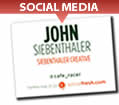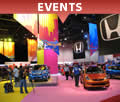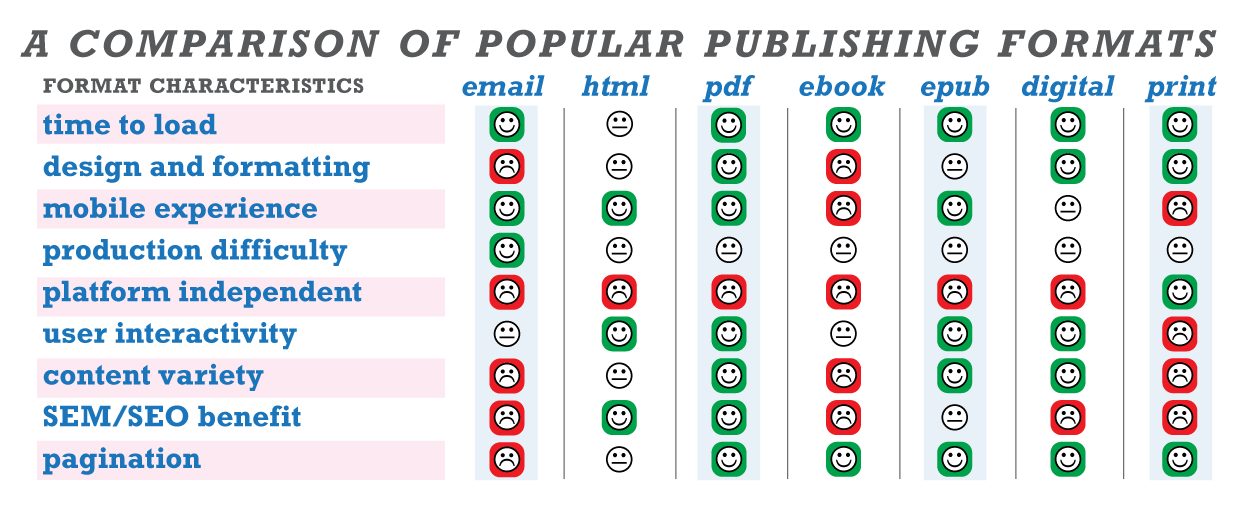Don’t Miss Out—This PR Media Channel
Is A Potent, Powerful Marketing Tool
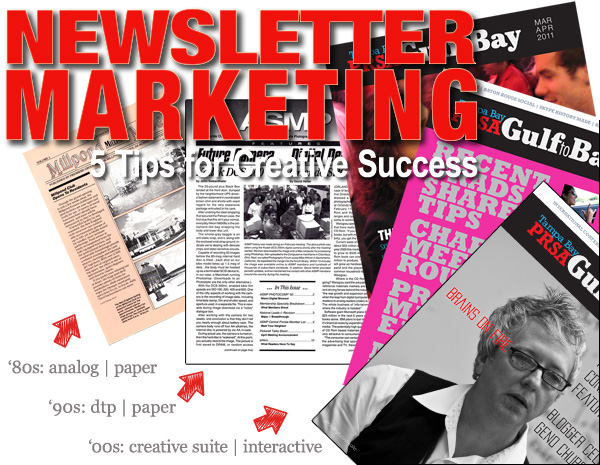
by John Siebenthaler
Update: As publishers like Platforming Books perfect digital publishing technology, expect more desktop, reader, tablet, and analog strategies to roll out.
Read my blog entry—Everything Old is New Again: Newsletters See Revival
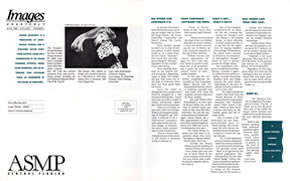 from analog to digital - an early adopter
from analog to digital - an early adopter
In the late ’80’s, desktop publishing was a distinctive new technology in its infancy. Primitive hardware and limited software were hugely expensive, but compared to X-ACTO blades, rubber cement and paste-up boards the writing on the wall literally couldn’t have been clearer.
I launched the then American Society of Magazine Photographers (ASMP) Images newsletter (above) to get my nose under the digital tent. The bi-monthly PR project successfully connected central Florida ASMP photographers with their counterparts in professional creative groups like AAF and AIGA.
The Public Relations Society of America (PRSA) Tampa Bay chapter newsletter was created, produced, and distributed as a fully featured and optimized magazine style PDF publication to elevate the brand among members and their public by showcasing chapter news in a contemporary style featuring professional art, copy, design, and production.
Modern Communications Workhorse
If you’ve been searching for an all-purpose PR, CRM, B2B or B2C marketing tool, today’s modern newsletter offers the ideal combination of interactive performance and informative function that’s perfect for snagging the attention of an increasingly distracted audience.
Between smartphones, e-readers, PCs, tablets, and even traditional mainstays such as print and television, consumers are getting content from more sources than ever before.
E-content Magazine
Combining familiar magazine style formats and the immediacy of post cards, newsletters are the backbone of successful internal communications departments, outbound and inbound marketing, and PR campaigns. They can break through web clutter with a message of engagement that uses rich media content for impact and appeal.
A bonus is that when thoroughly formatted, your newsletter packs a valuable SEO wallop that’s both elegant and efficient — Google love doesn’t get any better! (If you use a bulk email provider, make sure the content they deliver is arriving in the manner intended.)
The difference between distributing a newsletter subscribers look forward to and what typically lands in the email inbox is considerable, depending on how much (or how little) creative and technical ability is brought to bear.
A good first step in determining how to shepard the transformation from caterpillar to butterfly is to imagine your effort on a newstand kiosk in a departures airside and wondering if anyone would look twice based on eye appeal. Lets dig into the fluctuating state of newsletter physiology.
5 Essentials of Interactive Newsletter Publishing
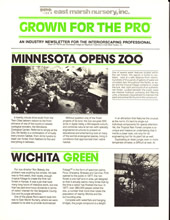
This 2-color, four page B2B direct mail piece was typical of the genre for years and filled an important slot in the marketing plan.
It’s only been a few years since a newsletter meant a lone 11"x17" sheet of Carnival 60# offset, folded once to yield four, one or two-color pages just like this entirely analog B2B version (right). The first digital publishing software – for many, Microsoft Word (copy) and Aldus Pagemaker (layout) – would revolutionize every aspect of marketing.
Format options now include an extensive array of publishing solutions: email, HTML, PDFs, eBooks, ePubs, digital and print are all part of a well equipped communications toolbox. Chances are good you’ll want to engage more than one (repurpose) for comprehensive coverage.
Before deciding on a specific look, first measure the audience and goal, match that up against the appropriate format, and then design to the platform.
Organizations with scheduled member news and events to communicate are well suited to a PDF. Manufacturers who roll out new products monthly might best benefit from an HTML email. Plain (text only) email supports links and problematic attachments but not embedding; eBooks are more paperback than magazine: simple art at best. Tablet only? Think ePub. Use my chart to help make your decision.
1) Document Length: If It’s Too Long, Turn the Page
A low bandwidth overhead combined with a pleasing graphic display makes using HTML for eBlast distribution popular. That said, a major drawback when used for newsletters longer than, say, one page is that long documents are awkard to scroll through (down). Build is usually in Adobe software like Dreamweaver or InDesign, hand coded, or created using any number of email delivery sources with built-in templates.
For a magazine style effect, desktop publishing to PDF is a great choice for the final format. Complex design solutions retain a look and feel that’s faithful to traditional publishing, in low to high resolution options. Multiple creative applications support PDF construction, including Photoshop, Illustrator and InDesign.
E-books and ePubs are device dependent (readers and tablets) with strict production requirements, and distribution is by subscription through vendors.
Your workflow will depend on what format is used for publishing. I use InDesign and Dreamweaver accordingly, supported by Photoshop and Illustrator. Word is the least capable platform, and really should be avoided.
2) Content: Mix And Match — Copy, Art, Video, Audio
What the modern newsletter is capable of displaying ranges from plain copy to exotic combinations of interactive components, depending on the format and viewing platform. Besides links and email tabs, content can also include streamed video, animation, and touch interactivity on tablets and smart phones. And when it comes to engagement, nothing succeeds like well chosen photos and dramatic video.
Dynamic forms are an increasingly popular and highly useful component of the contemporary newsletter. SEO metadata like titles, keywords, and descriptions make a big diffference in marketing reach.
3) Design: Style And – Not Or – Substance
No matter how well written, without a basic design component your newsletter will struggle for engagement as consumers of media consistently demonstrate a preference for style.
Design failure is often the result of a rambunctious use of odd colors for type and backgrounds, unusual effects for artwork, layouts constructed entirely in tables, or the unfortunate selection of silly typefaces. If you think red on black is a dramatic use of creative license, it will come as a shock when no one reads your text set in 9-point thin type.
When in doubt, leave it out - there’s never a good reason to use Comic Sans. Unadorned Times (Regular) may not jump off the page but it won’t scare anyone either. Resist the urge to style if you can’t visualize how that bright orange headline reads against a lavender color field.
4) Platform: First, Know Your Audience
Platforms available for experiencing content include everything from desktops to Kindles. Mobile devices have opened huge new opportunities for published content to gain an audience, especially when distributed as epubs through sites like Amazon and iTunes.
If your target is mobile, options include both apps and browsers, with the latter served with CSS styled HTML.
5) Delivery: Push Once, Pull Forever
When newsletters were published only as print, distribution consisted of stamped mail, POS, and event handouts. Now, delivery is by subscribed outbound (email) and inbound (SEM) to a global marketplace, and the newly popular Every Door Direct Mail (EDDM) micro targeting for print. All are a powerful incentive to make maximum use of your available resources, and that includes making the most of SEO opportunities within the publication.
No matter how you get your own copy — by mail, Google search, or list delivery — today’s newsletter has not only survived the devaluation of traditional print, but is actually thriving thanks to the unique and customizeable qualities of this exceptional media channel.
See more content and newsletter design here and on my behance site.




